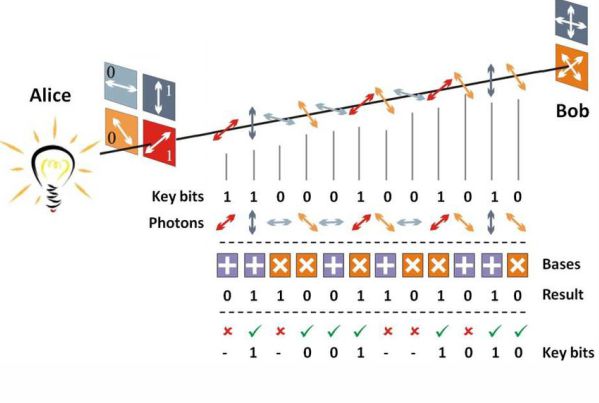In a milestone in indigenous Quantum technology, a joint team of scientists from the Defence Research and Development Organisation (DRDO) and Indian Institute of Technology (IIT) Delhi, successfully demonstrated, on 24 February, Quantum Key Distribution (QKD) link between Prayagraj and Vindhyachal in Uttar Pradesh, a distance of more than 100 kilometres.
QKD is primarily a mechanism to undertake secure communication which utilises a cryptographic protocol involving various components of quantum mechanics. The technology enables two communicating sides to come up with random secret keys shared by both of them and known exclusively to them, so only they can use it to encrypt and decrypt messages, thus achieving a very highly-secure communication.
In December 2020, the technology was tested for communication between two DRDO facilities in Hyderabad—the Defence Research and Development Laboratory (DRDL) and Research Centre Imarat (RCI)—over a distance of 12 km.
A press statement from the Ministry of Defence said on the latest test, “This technological breakthrough was achieved over a commercial-grade optical fibre already available in the field. With this success, the country has demonstrated indigenous technology of secure key transfer for bootstrapping military-grade communication security key hierarchy. The performance parameters have been measured and have been found to be repetitively within the reported international standards at sifted key rates of up to 10 kHz. This technology will enable security agencies to plan a suitable quantum communication network with indigenous technology backbone.”
Secure communications are vital for defence and strategic agencies across the globe and the distribution of encryption keys is the crucial factor for it. Sharing of keys over the air or wired links requires encryption, which in turn requires encryption keys to be pre-shared. Quantum-based communication offers a robust solution to sharing the keys securely. DRDO has undertaken multiple projects for the development of this technology.
The technology is expected to help define standards and formulate crypto technology-related policies that can use the QKD system in a unified Cipher Policy Committee (CPC) framework in the country for more secure “key management” for current and future military cryptographic systems.
In the last week of December 2020, DRDO Young Scientist Laboratory for Quantum Technologies (DYSL-QT), a DRDO facility based in Mumbai, developed a Quantum Random Number Generation (QRNG), which has the ability to detect random quantum events and convert those into a stream of binary digits. The QRNG system developed by DYSL-QT passed the global randomness testing standards of NIST and Die-harder Statistical Test Suites at the speed of around 150 kbps after post-processing. The generated random numbers were also evaluated and verified using DRDO’s indigenously developed Randomness Testing Statistical Test Suite of Scientific Analysis Group. With this development, India had entered the club of countries that have the technology to achieve the generation of random numbers based on the Quantum Phenomenon.
Most of the large economies and defence powers across the world have in the recent past formulated dedicated plans for the development of quantum technologies. These countries include the US, Canada, several European countries, China, Japan and South Korea. India has seen significant policy decisions and budget allocation for the sector.
However, senior DRDO scientists and defence officials say that developments in India need to be seen especially in the context of several claims made by China. China has said that it has achieved multiple breakthroughs in the quantum technology domain that included the world’s first quantum satellite, the world’s first optical quantum computing machine prototype and also a 2000 km long quantum communication link between Beijing and Shanghai.


















